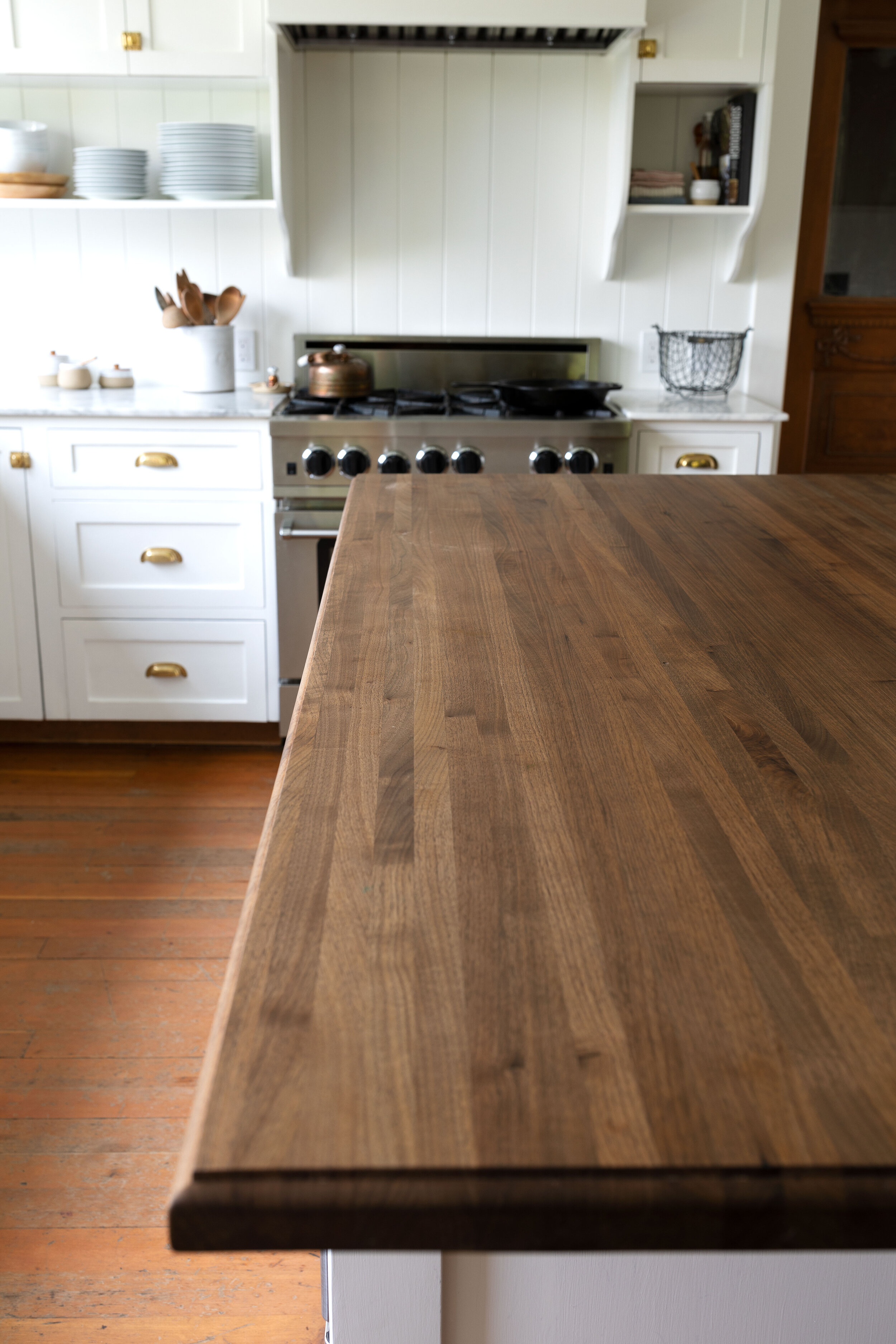How we Care For and Oil our Butcher Block Countertop
THE FARMHOUSE
We’re pretty low-key when it comes to countertops. That might surprise some of you considering we have honed marble and a walnut butcher block in our kitchen, but honestly we’ve found both to be beautiful, durable and a great fit for our family-friendly, low-fuss mind set. And thank goodness because we want to cook and create and live in our kitchen, not spend all our time maintaining it!
Today we’re sharing our butcher block care routine learned from a decade of having butcher block countertops in kitchens. It really comes down to routine cleaning and occasional oiling and we’re walking you through the process below.
vase, art, + kitchen sources
We commissioned this edge-grain walnut butcher block two plus years ago when we remodeled the kitchen and added a routered edge to it. We loved it then and are even more smitten with it now. It’s held up wonderfully with minimal care. And that’s saying something because we use this island a TON - we prep food here and eat most of our meals on it. It’s hands down the most used surface in our home!
BTW We don’t cut directly on our butcher block countertop. But we do prepare food here and eat on it, so we opt for a food-grade finish. This is our 6th kitchen we’ve done with butcher block countertops and over the years we’ve tried out a number of different butcher block finishes, from penetrating oils to polyurethanes, but this oil is simple and safe and our favorite to date.
I should also mention that our butcher block doesn’t have a stain on it. This is the natural color of the walnut. We prefer not to stain butcher blocks since that requires more care to maintain a nice even stained appearance.
How to care for a butcher block countertop
Our butcher block really doesn’t need much - routine cleaning with soap and water (or just water!) and occasional oil. I really wanted to show you the process today so we filmed it the last time we oiled this beautiful walnut butcher block.
Pretty simple, right?! Here are a couple more details and photos of the process…
When to oil butcher block
We oil our butcher block a few times a year. Basically whenever it looks really dry. I snapped the photos below right before we oiled it this last time and you can see how the wood looks dry. At the corner of the countertop is an extra dry spot that probably came about from me scrubbing after finding pencil marks on the countertop. That happens around here. Thankfully butcher block is resilient!
How to clean butcher block
Before we oil our butcher block, we give it a good cleaning. In general we use an old washcloth with a little water to wipe down the countertops. When they need more, we add a little dish soap to the mix. That’s it. Occasionally we’ll scrub the countertop with a scouring pad when, say, the kids do a science experiment on it. That just makes the butcher block dry and means it needs oil sooner.
Our favorite butcher block oil
Like I said, there are quite a few butcher block finishing products on the market…and over the years we’ve tried SO many of them. But this oil is our favorite. A food-grade mineral oil that’s colorless, odorless, and tasteless. (For butcher blocks around a sink, we’d recommend something more like an oil-based poly.)
How to apply the oil
We use an old rag to apply the oil. We store the rag with the oil under the sink that way we can reuse it and don’t have to re-saturate the rag the next time we want to apply oil.
I apply the oil either directly to the butcher block or onto the rag and rub it in using a long oval motion in the direction of the grain. Once the entire butcher block is oiled, let it soak in for a few minutes, and then wipe up any excess. There usually isn’t much excess, meaning the butcher block really needed oiled!
Here’s what the countertop looks like once the oil is dry and any excess whipped off. You can see that it’s darker, richer, and no longer dry looking like it was in the pics at the beginning of the post.
That’s it, everything we do to care for and oil our butcher block countertop. Pretty simple, right?!




















